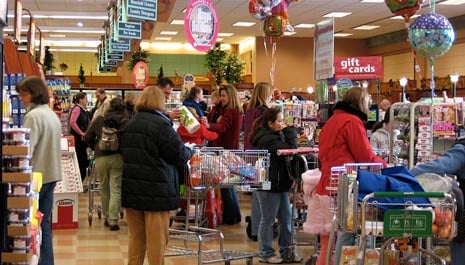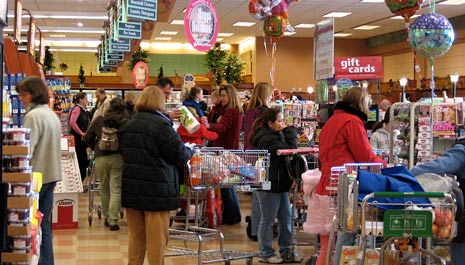Our recent Grocery Consumer Insights Study showed that consumers prefer national/regional chains to local stores/farmer’s markets by a factor of 9:1. So, how are big stores able to cultivate such a following? One trick up their sleeves is loyalty rewards programs. Looking closely at the rewards programs of two leading national chains, Kroger and Safeway, it quickly becomes apparent that their programs are virtually identical. Below, is an outline of a few key features these two leaders deploy to keep customers coming back.
Why Reward Loyalty?
Rewards programs are a necessary and ubiquitous cornerstone of customer retention, and Americans now have over 3 billion collective memberships. But in grocery, razor-thin margins prohibit deep discounts—even a 1%-2% savings for customers can represent a 30%-50% hit to a grocer’s net profit. Yet it remains a singularly important needle to thread in order to drive loyalty and acquire invaluable data on individual and collective shopping habits.
The difficulty of establishing a viable program coupled with its utter necessity leaves grocers to find new ways to induce customers with convenience, discounts, and perks.
Integrating Across Channels
The days of swiping a card at the register to save an extra $.10 on a box of tissues are long gone—rewards cards are no longer undifferentiated tickets to a carnival of small savings. They are now individuated, dynamic, and above all technologically flexible.
At Kroger and Safeway, physical loyalty cards (a grocery mainstay for the past 20 years) link to customer-created digital profiles. These profiles sync across desktop, mobile, and in-store, meaning all the information that a customer volunteers and the store gathers is housed in one location, making data more deployable and customers more easy to target.
Digital Coupons, Real Savings
Coupons, with 80% of consumers reporting they use them in our recent study, are an obvious starting point for any rewards program. Both Kroger and Safeway allow consumers to search through a database of available coupons through mobile or desktop and “add” them directly to their loyalty card; the savings automatically register at checkout.
But that’s not even the cool part. As the stores gather more information about individual customers, they start to offer targeted discounts based on shopping history. According to Forbes, redemption rates of targeted coupons vary between 10% and 20%; traditional coupons are redeemed at about 1%.
This accomplishes two interrelated goals. First, the customer feels as though they are getting individual attention and savings that are relevant to their tastes and preferences. Second, it allows stores to limit the savings offered on particular items to only those loyal customers who would find it relevant and rewarding. Stores maximize the value of a savings offer by confining it to people who not only are highly likely to use (and appreciate) it, but are also the store’s most valuable customers.

Shopping Lists
Making a shopping list can be a huge pain, almost as big a pain as navigating aisles hunting particular items. Kroger and Safeway alleviate this pain by providing highly flexible, digital shopping lists. The lists sync between devices, automatically categorize items, and can even read barcodes through their mobile apps.
Most impressively, however, both stores offer customers the opportunity to sign in at a specific store location. Once there, customers can organize their shopping list by aisle and get a step-by-step guide through the store. If customers are willing to prepare the list ahead of time, and in doing so chose one chain over another, they stand to find a much more convenient, user-friendly experience.
Fuel Points
Though not without their detractors, fuel programs are popular across the country, with over half of Americans enrolled in at least one. Both Safeway and Kroger offer them.
The fuel points system is essentially the same at both stores: every in-store dollar spent counts as one point, and when 100 points have accumulated, the loyal customer can reduce their gas cost $.10/gallon at participating stations. The savings double as well, meaning if a customer holds out and saves 200 fuel points, they can reduce their fill up by $.20/gallon; 300 points for $.30/gallon etc.
With customers deciding when to pull the trigger on their savings, some chose to accumulate enough points over time that they can fill up for $1/gallon, others use them as soon as they can. Either way, customers feel empowered to make the decision.
Future Rewards
The ideal rewards program is mutually beneficial: customers should feel like they are receiving tangible rewards for their loyalty, and stores should feel the financial rewards of both a devoted customer base and a bounty of big data at their disposal.
What they do with that data—how they harness it to improve the customer experience and their own efficiencies—will be what differentiates individual loyalty programs. Because, as we’ve seen, at least when it comes to Kroger and Safeway, they are otherwise identical.


